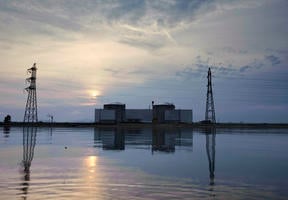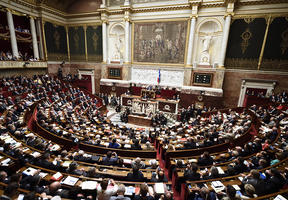The High Energy Cost of Connected Devices
Published on 11.14.201610 min read
Information and communication technologies (ICTs) refer to all computer, audiovisual, Internet and telecommunications devices and applications that enable users to produce, manage and transmit information in all forms, whether as text, sounds or images. ICTs have revolutionized the economy and our everyday lives, and have also opened the door to energy savings across a range of sectors. Yet at the same time, they are increasingly hungry. The question is whether the benefits will outweigh the disadvantages.

© TOBIAS SCHWARZ / AFP - Devices can be made "smart" using thousands of applications – such as the one shown here, which lets you check if your fridge is running low on food from a tablet – but they all consume a lot of electricity.
While experts occasionally argue over the figures, they all agree that ICTs have become one of the sectors with the highest levels of consumption. According to one study1, they currently soak up nearly 10% of all electricity generated worldwide, or around 1,500 TWh a year. This is equivalent to three times France's electricity generation or the combined output of Germany and Japan. In terms of , it represents 1.5 times the consumption of the entire world aviation industry. Digital services are in fact more power hungry than they appear. Smartphone applications use more energy per year than a large refrigerator. And it takes more electricity to download a high-definition movie than it does to manufacture and ship the good-old-fashioned DVD.
Forecasts of future ICT energy consumption trends are even more dramatic. The has studied the phenomenon and distinguished two categories of ICT devices2:
- Devices that are designed to produce and transmit data, networks themselves and all central systems such as data centers.
- Devices that are not needed for network operations but stay connected to respond to signals. Broadly referred to as "connected devices", these have become extremely widespread in mobile telecommunications, , urban management and public transportation, as well as in everyday life through such products as tablets, smartphones, smart televisions and printers, online games and, increasingly, smart watches and glasses, heart rate monitors and sleep trackers.
This second category is experiencing considerable growth. According to the IEA, connected devices collectively consumed 420 TWh of electricity in 2008 and 616 TWh in 2013, with the figure forecast to rise to 1,140 TWh in 2025. This trend is being driven by the soaring prevalence of cell phones and connected devices, whether used independently or included within other machines. The IDATE Institute has predicted that their numbers could rise from 42 billion units in 2015 to 155 billion in 20253.
The Problem with "Standby Mode"
These devices consume power not only when they are "on" but also when they are in standby mode. The IEA even estimates that 80% of the power consumed by connected devices serves to maintain their network connectivity. For this reason, the agency has called on manufacturers to follow in the footsteps of smartphone makers and increase the energy performance of these devices, notably by reducing their power consumption in standby mode.
The irony of the situation is that a lot of these new devices were designed precisely to save energy. This is the case, for example, with connected home automation equipment (smart thermostats, sensors, connected wall outlets, radiator faucets, etc.), which communicates with a central control unit to enable more effective management of the lighting, heating, ventilation and other utilities – at least theoretically.
Numerous studies on these new tools predict energy savings of between 8% and 15% or more. However, these figures should be read against how much power is needed both to operate these devices and to manufacture and distribute them. In other words, the entire lifecycle of these billions of tiny gadgets must be taken into account.
More generally speaking, the widespread and often inventive use of digital technology to generate exponential power savings does not always offset the amount of energy consumed by additional digital operations elsewhere. One frequently cited example is the Bank of America Tower in New York City. Its cutting-edge ecological innovations make it one of the "greenest" buildings in the world. Inside, however, the sophisticated floors operate day and night, consuming huge amounts of electricity. As a result, the building uses more than twice as much energy per square meter as the Empire State Building, which was completed in 1931.
The main ICT firms have become aware of the threat that this rising energy consumption poses to their credibility in the area of . Apple, Facebook and Google all frequently highlight how their centers are powered by renewable energies, or how the heat they generate is reused for other applications.














